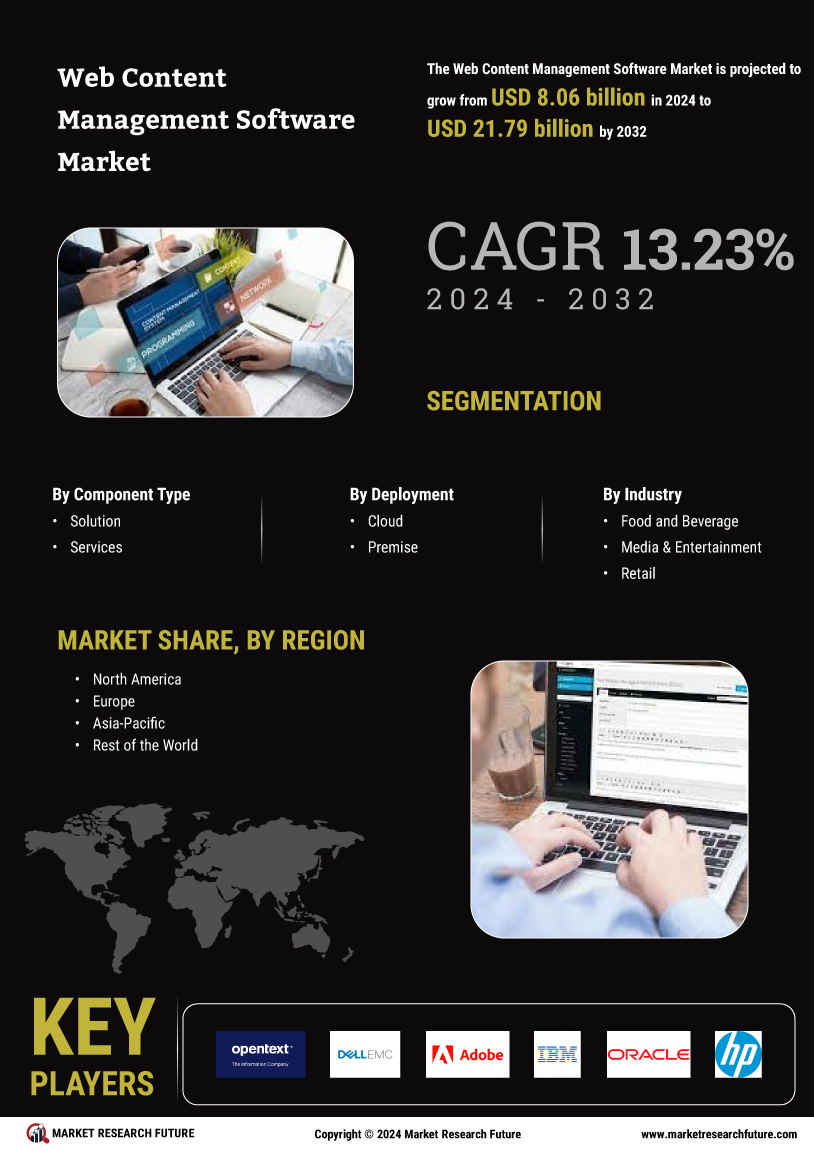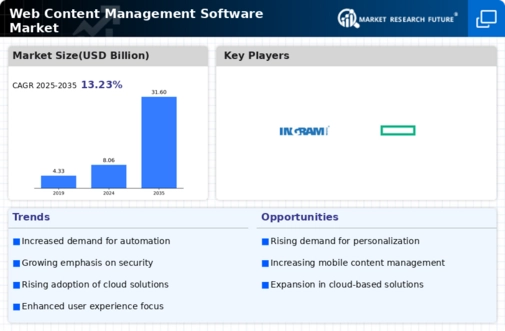The Web Content Management Software Market is currently characterized by a dynamic competitive landscape, driven by rapid technological advancements and an increasing demand for digital content management solutions. Key players such as Adobe (US), WordPress (US), and Sitecore (US) are strategically positioning themselves through innovation and partnerships, thereby shaping the market's competitive environment. Adobe (US) focuses on enhancing its Adobe Experience Manager platform, integrating AI capabilities to streamline content creation and management processes. Meanwhile, WordPress (US) continues to expand its user base by offering customizable solutions that cater to diverse business needs, emphasizing user-friendly interfaces and extensive plugin ecosystems. Sitecore (US) is leveraging its robust analytics capabilities to provide personalized content experiences, which is becoming increasingly vital in a market that values customer engagement and retention.
The business tactics employed by these companies reflect a moderately fragmented market structure, where localized strategies and supply chain optimization play crucial roles. Companies are increasingly localizing their offerings to meet regional demands, which enhances their competitive edge. The collective influence of these key players is significant, as they not only drive innovation but also set industry standards that smaller competitors often strive to meet.
In August 2025, Adobe (US) announced a strategic partnership with a leading AI firm to enhance its content management capabilities. This collaboration aims to integrate advanced machine learning algorithms into Adobe Experience Manager, allowing users to automate content personalization at scale. This move is likely to solidify Adobe's position as a leader in the market, as it aligns with the growing trend of AI integration in content management solutions.
In September 2025, Sitecore (US) launched a new version of its Experience Platform, which includes enhanced features for real-time customer data integration. This update is significant as it allows businesses to create more targeted marketing campaigns based on user behavior, thereby improving customer engagement. Such innovations are essential in a landscape where personalized experiences are increasingly demanded by consumers.
In July 2025, WordPress (US) introduced a new suite of tools aimed at improving website accessibility and compliance with global standards. This initiative not only demonstrates WordPress's commitment to inclusivity but also positions the platform as a responsible choice for businesses looking to enhance their digital presence. By prioritizing accessibility, WordPress is likely to attract a broader audience, further solidifying its market share.
As of October 2025, the competitive trends in the Web Content Management Software Market are heavily influenced by digitalization, sustainability, and the integration of AI technologies. Strategic alliances are becoming more prevalent, as companies recognize the need to collaborate to enhance their offerings and meet evolving customer expectations. Looking ahead, competitive differentiation is expected to shift from price-based competition to a focus on innovation, technological advancements, and supply chain reliability, as businesses strive to deliver superior value in an increasingly complex market.

















Leave a Comment